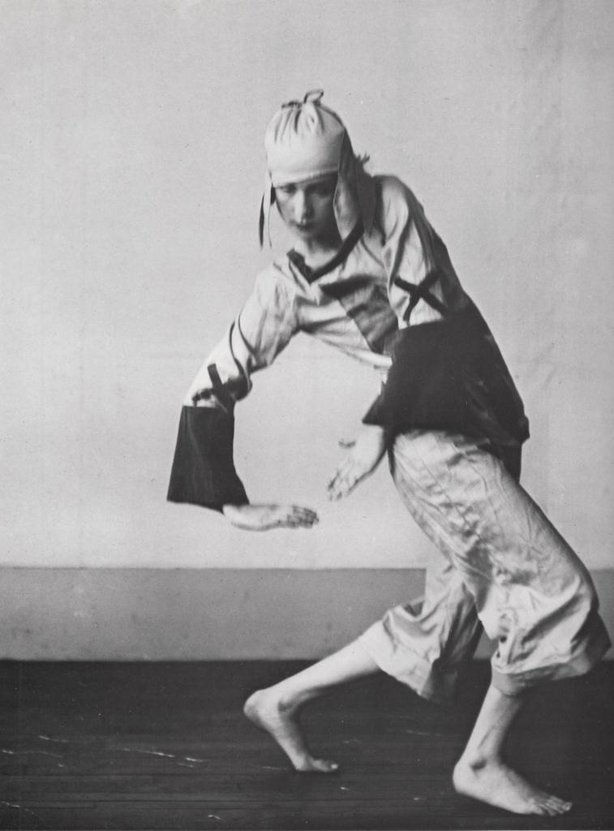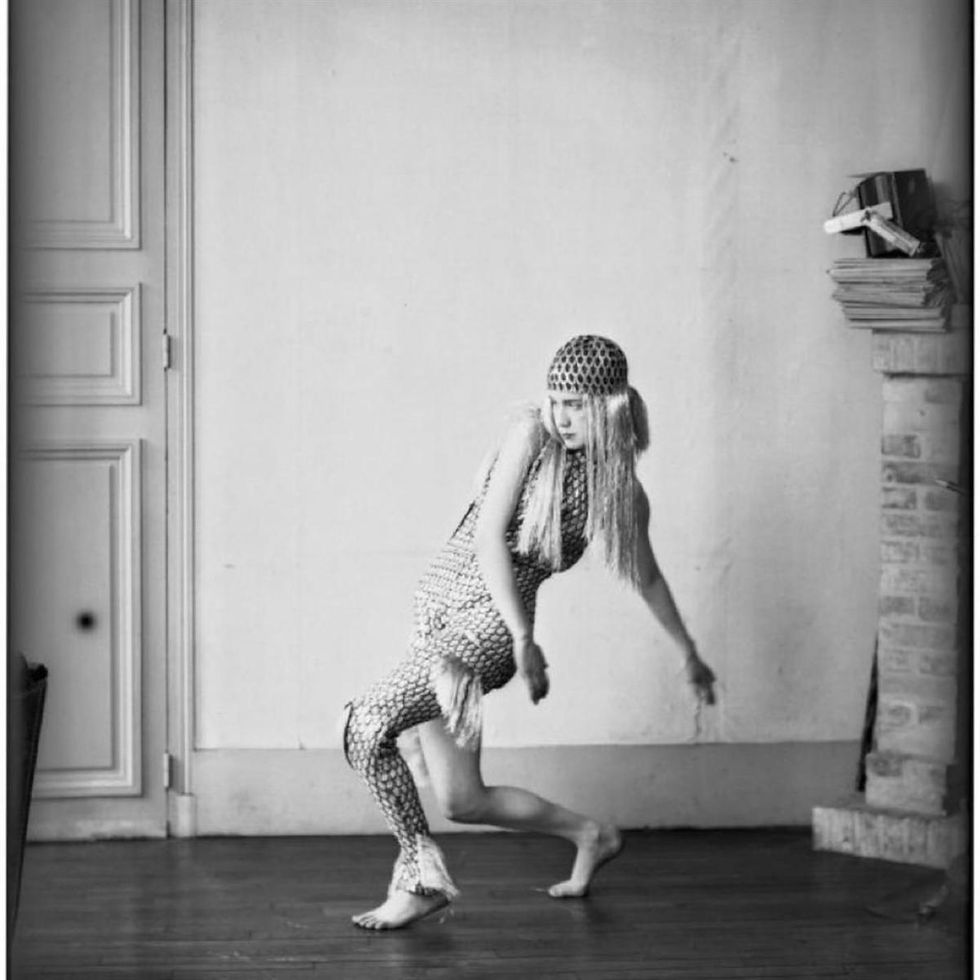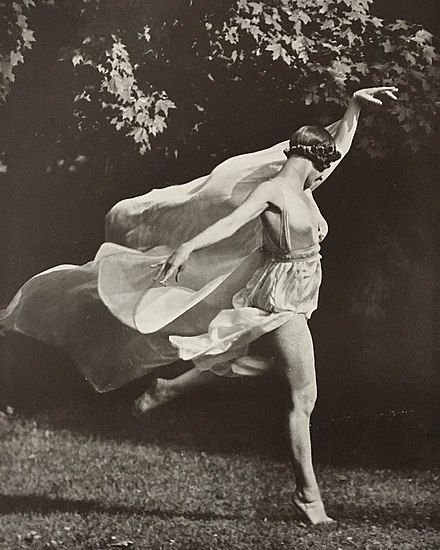LUCIA, A FIGURE OF GREEK VASES by Dirce Waltrick do Amarante
- Dirce Waltrick Do Amarante
- 4 de mai. de 2021
- 4 min de leitura
Atualizado: 17 de fev. de 2022
LUCIA, A FIGURE OF GREEK VASES
By Dirce Waltrick do Amarante

The year was 1904, the dancer Raymond Duncan, in love with Homer, left for Greece, with his mother and his sister Isadora Duncan. He arrived in Ithaca, adopted Greek costumes for the rest of his life, and later, in Paris, started to make Greek-style tunics and sandals, which were used by Gertrude and Leo Stein, for example.
Greece influenced the Duncans forever. As we can read in “Lucia Joyce: To Dance in the Wake”, by Carol Loeb Shloss: “Isadora had responded to it by dancing in tunics and veils that later became her trademark”. On this occasion, Raymond met the brother and sister Angelos and Penelope Sikelianos: he wrote poetry, and she sang and played ancient Greek and Byzantine songs. Raymond and Penelope fell in love, bought land near the Acropolis of Athens, and established there a kind of school. He himself studied the science of Greek movement and music, "finding a rationale and a method that distinguished him from Isadora, whose dance he considered authentically Greek but too feminine for him to emulate", as Shloss says.

In the 1920s, in Paris, Raymond ended up being Lucia Joyce's first dance teacher. In the few photos we have of Lucia, we see her, moreover, as a figure of Greek vases, in movements rehearsed in her teacher's classes.

At that time, “Ulysses”, by James Joyce, had already been published, and it is interesting to think that the Joycian odyssey takes place precisely in 1904, the year in which Raymond went to Greece. It seems to me that returning to Greece was the fate of the Irish writer, and he would return to the land of Dionysus in “Finnegans Wake”, this time, alluding to Lucia's notion of dance.
Lucia got involved with the dance and “undoubtedly noticed the verve, the style, the dazzling variety of dancers who surrounded her in Paris”: Anna Pavlova, who she adored, Jean Borlin, Josephine Baker, George Balanchine, Rudolf Laban, among others. Obviously, Vaslav Nijinski's Russian ballet, before them, paved the way for new movements and was not disregarded by Lucia. Coincidentally, in 1919, Nijinski was diagnosed with schizophrenia, the same disease that affected Lucia Joyce.

In “Finnegans Wake”, Joyce seems to sum up Lucia's period as follows: a “danger zone in the dancer years. If ever I catch you at it, mind, it's you that will cocottch it! I'll tackle you to feel if you have a few devils in you” [439].
The reference to the dangerous zone is not necessarily negative, but risky in the sense of new. While dancing, Lucia saw her body as a place of resistance and power that tries to subvert the laws imposed on her. In fact, contemporary dance has allowed her to be even more daring: “you're too dada for me to dance”, as you read on page 65 of “Finnegans Wake”.
For Lucia, as Shloss says, the dance “dissolving the rational self was often the goal of dancing when conceived as a collective rite and the dancers’ gift to modern culture. They saw themselves as the bearers of wisdom, the vehicles of tragedy, restoring a bacchic spirit to a word diminished by too much science, too many machines, and too many alarm clocks”.
Lucia believed that “the dance becomes a direct image of something that was formerly invisible, though denoted or suggested by words […]”. It was the “Book of Kells”, which she saw for the first time at the age of 15, that led her to become interested in dance, which then made her interested in painting and literature. As Shloss states, “its [“Book of Kells”] flowing, rhythmic calligraphy had led her to admire dance, then learn dance, and finally to let dance guide her pen and brushes”. Lucia drew chapter letters and made all the letters of the alphabet. Joyce not only approved it, but she also wished it had been published.
For Joyce, Lucia designed the cover and made some illustrations of a fragment of the then “Work in Progress”, which he would publish separately under the title “The Mime of Mick, Nick and the Maggies”. In 1933, the publication was published by The Servire Press, with the cover, a capitular letter and an illustration (tale-piece) by Lucia Joyce.
Her lyrics danced, as did the “Finnegans Wake” language, as we can read on page 404 of the novel: “the dancetongues of the woodfires and the hummers in their ground all vociferated echoating: Shaun! Shaun! Post the post!”.
There are many mentions of dance in the writer's latest novel: “Irish saliva, mawshe dho hole, but would a respectable prominently connected fellow of Iro-European ascendances” [62].
“Finnegans Wake” is in fact a great ritual, built on a “fairness of fondance” [249], thanks, in part, to the life and work of Lucia Joyce.
Lucia knew that she was one of her father's literary references and often wanted to get rid of this task that seemed too arduous. But she did not succeed: Lucia would have influenced the language and the theme of “Finnegans Wake”, which explores the dream and the delusion, close to her state of consciousness, who suffered from schizophrenia.
“Finnegans Wake” was the biggest “dynasdescendanced” [FW, 109] that Lucia Joyce left.
James Joyce knew that his daughter had a great talent and went so far as to affirm: "When she reaches her full capacity for rhythmic dancing, James Joyce may yet be known as his daughter’s father".






Comentários